After The New Wears Off - A Year On The Unibody MacBook
Wednesday, March 31, 2010
by Charles W. Moore
I’ve just closed the loop on my first year using a late 2008 model 2.0 GHz Unibody MacBook, purchased Apple Certified Refurbished, as my main production workhorse computer, and I’m happy to report that it’s been an overwhelmingly good trip so far.
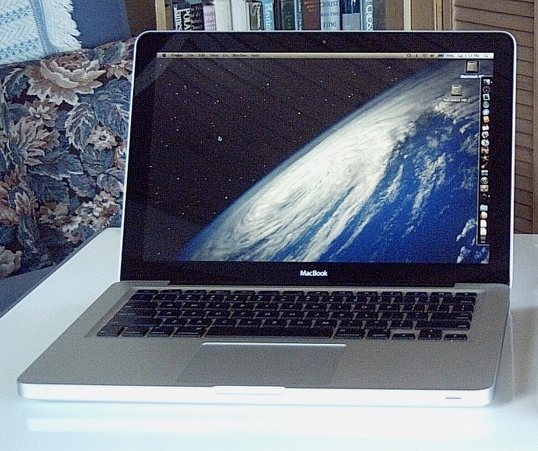
This sublimely attractive and likable machine has proved a new high water mark for stability - and my G4 PowerBook and Pismos are tough acts to follow in that department. Since upgrading the RAM to 4 GB last summer, restarts have become almost entirely optional in normal use.
Ad: Compare MacBook prices at MacPrices.net. Current models are available today for up to $250 off MSRP, refurbished models up to $1000 off! Price trackers updated each morning.
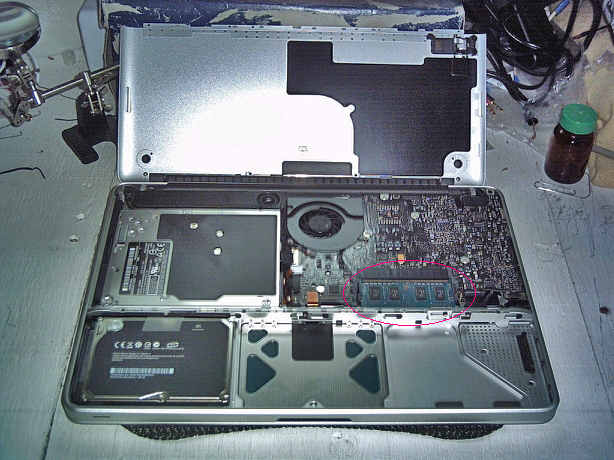
As I compose this report I think it’s been more than a month since I last rebooted the little ‘Book, and that’s with intensive daily use running many, many applications, and nearly two-dozen open at any given time.
By contrast, I was rarely able to last much more than a week without restarting the G4 PowerBook, which has 1.5 GB of RAM. in this sort of use, although my wife, who inherited that machine, routinely goes much longer than that with the fewer than half-dozen applications she normally uses.
I should add that MacBook was reasonably comfortable running my suite of production applications with the standard 2 GB, which is why I was able to go nearly half a year before getting around to adding the adding the 4 GB upgrade, but I’m now an enthusiastic advocate of going with 4 GB or more (the successor 13” MacBook Pro supports up to 8 GB). The MacBook was very good with 2 GB, but it’s substantially better with 4 GB.
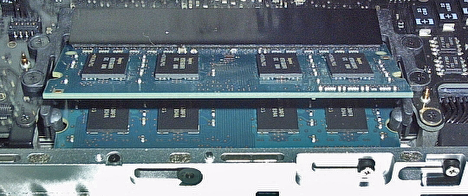
So far, I have no complaints about the speed I’m getting with the 2 GB Core 2 Duo processor, which is of course a lot faster than the 550 MHz and 1.33 GHz CPUs I’m still used to on my Pismos and the PowerBook G4.
Ditto for the Nvidia GeForce 9400M integrated graphics chipset, which is more than adequate for my graphics and video support requirements so far.
When I began using the MacBook in March, 2009, I was still stuck with dial-up Internet, which was a lot bigger workflow bottleneck (understatement) than the CPU power of the ancient G4 PowerBooks, but even with the wireless broadband service I’ve had since last September, I think the 2.0 GHz MacBook is still capable of more than the ISP’s network can deliver.
After a year, I still have plenty of free space on the stock 160 GB hard drive that shipped with the MacBook. Consequently, I haven’t got much incentive to upgrade to a larger-capacity drive, but then I don’t have much in the way of movie content stored or either large photo or music collections.
I do have 500 GB, 1 TB and 2 TB external hard drives to handle any excess storage capacity I might need in the foreseeable future, as well as regular data backups. In the meantime, that “little” 160 GB drive remains whisper-quiet after a year of intensive use, which is much in its favor. Indeed, relative silence is one of the most attractive attributes of this computer, as even the internal cooling fans -- fan noise being a perennial bête noir of mine -- are the least objectionable I’ve ever experienced in any laptop computer. A 7,200 RPM hard drive would doubtless enhance performance, but possibly at the cost of more noise and heat generation, resulting in more fan cycling. Notwithstanding the relative non-obnoxiousness of the MacBook’s fans, I endeavor to keep fan-cycling to a minimum, as the little air-movers do tend to become noisier as they wear.
When I decided to downsize to the 13” MacBook from a 17” PowerBook I was a bit apprehensive about reverting to a lower-resolution display as well as whether I would be satisfied with the glossy-finish display surface. I do miss the extra 100 pixels of vertical display depth and extra width of the old 17-incher’s 1440 x 900 resolution screen, but I don’t mind the glossy surface at all — now a non-issue for me, and the super-bright, instant-on LED screen backlighting is great.
The unibody MacBook’s keyboard is better than average for laptop keyboards, but I still much prefer the keyboards in my Pismo and WallStreet PowerBooks, which remain my benchmark for excellence in computer keyboard feel and comfort. I like the oversized glass “buttonless” trackpad, the lack of a separate trackpad button more intuitive than I had expected. I’ll give it full marks for being more comfortable than the objectionably stiff trackpad buttons in the Pismo and WallStreet, and the trackpad is vastly superior to the utterly wretched one in the 17” PowerBook.
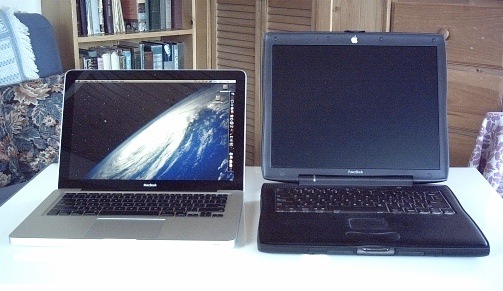
However, the MacBook’s built-in input devices are of secondary consideration for the preponderance of use this MacBook is getting anyway, since most of the time it’s on a laptop stand hooked up to an external keyboard and a battery of pointing devices, including a Contour rollerbar mouse and a foot mouse, while the two old Pismos I have in service fill the role of hands-on portable machines in my fleet. Eventually, however, the MacBook will probably be pressed into service as a replacement for at least one of the Pismos when I make my next primary system upgrade, provisionally in early 2012.
My optimism that the 13” unibody could turn out to be a worthy successor to the Pismo as my nominee for best Apple laptop ever is getting stronger all the time, although the bar is set very high and it needs a few more years of reliable service to confirm that evaluation. At this point there have been no reliability issues at all — zip, nada, zero. “It just works”, and has reinforced my conviction that Apple’s Certified Refurbished units are an excellent value — this being the fourth ACR device (two computers; two iPods) I’ve purchased i a row with flawless performance from all. I’ve heard that ACR units actually are subjected to more rigorous quality control vetting than new units, although I can’t positively conform that. Anecdotally, however, it’s been great.
In the meantime, I love the look and feel of this MacBook -- the unibody design being the best-looking Apple ‘Book yet, with its exquisite “just right” proportions and fine watch standard of workmanship and finish. To my sense of aesthetics it’s by far the best-looking of the four (counting the MacBook Air) unibodies. Sort of like the PowerBook 5300 and 12” dual USB iBook had “golden mean” proportions, but the larger PowerBook 3400 and 14” iBook that were scaled up from them were ugly duckling homely and somewhat ungainly respectively. I think the 15” and 17” unibodies fare better in the looks department than those machines, but the 13-incher is the pick of the litter in terms of looks.
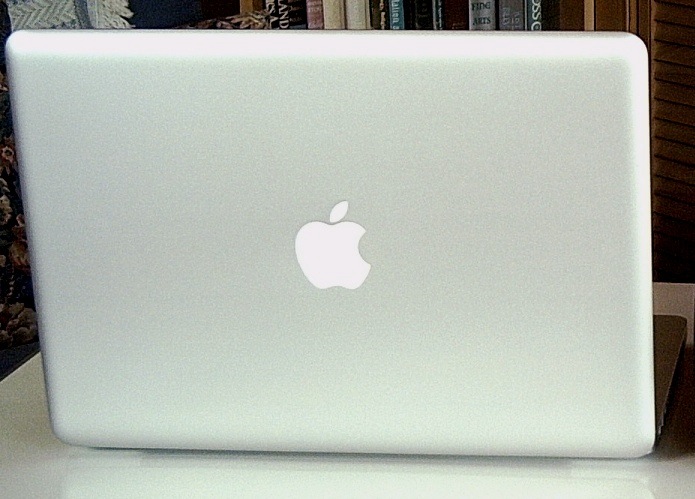
I also like magnetic MagSafe power adapter plug a lot, although it rankles that Apple has thus far refused to license the technology to third-party suppliers.
To date, I’ve procrastinated about upgrading to OS X 10.6 Snow Leopard, mostly because WindowShade X, which I refuse to work without for production, does not yet support version 10.6. It’s been no hardship, since OS X 10.5.8 Leopard remains a sterling performer on the MacBook. Nonetheless, I finally encountered a software application I need to review that requires OS 10.6, so I ordered a copy of Snow Leopard last week, which may have arrived by the time you read this. Since I still have plenty of hard drive free capacity, my provisional plan is to install Snow Leopard on my nearly empty 40 GB second hard drive partition for service when required, while continuing to use Leopard as my main production OS until hopefully Unsanity Software gets a Snow Leopard compatible version of Windowshade X out the door. I’ll let you know how that goes.
There’s not much to report in the negative column for this computer. My main complaint remains the lack of FireWire support, which was happily restored when this model was replaced by the 13” unibody MacBook Pro in June of last year. Do I wish I’d waited a few more months? I have mixed feelings. Living with USB only hasn’t been as bad as I’d anticipated, so long as you make sure to connect any device that wants reasonably lively data throughput to the rearmost USB port (the one closest to the display), which is full-powered, as opposed to the frontmost one which is not, and a complete slug of a bottleneck performance-wise. FireWire would be nice though, with its markedly superior real-world performance and no hassle bootability (although you can boot from OS X installed on an external drive via USB).
On the other hand, I’m no fan of Apple’s switch to built-in, non-swappable batteries, so the easily removable battery in my 13” MacBook is a strong argument in its favor, IMHO.
Bottom line, after a year, I’m more than satisfied with the 13” unibody MacBook, and wouldn’t hesitate recommending one of these machines (still intermittently available as Apple Certified Refurbished units), or the 13” MacBook Pro unreservedly.
Note: Letters to PowerBook Mystique Mailbag may or may not be published at the editor's discretion. Correspondents' email addresses will NOT be published unless the correspondent specifically requests publication. Letters may be edited for length and/or context.
Opinions expressed in postings to PowerBook Mystique MailBag are owned by the respective correspondents and not necessarily shared or endorsed by the Editor and/or PowerBook Central management.
If you would prefer that your message not appear in PowerBook Mystique Mailbag, we would still like to hear from you. Just clearly mark your message "NOT FOR PUBLICATION," and it will not be published.
CM